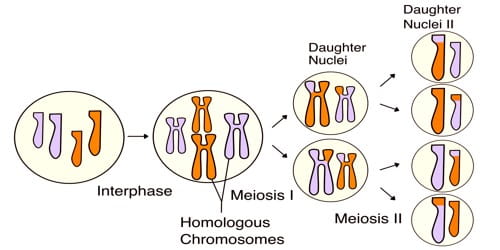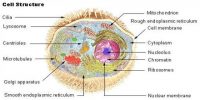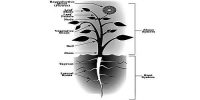Meiosis is cell division for gamete cells. It is used for just one reason in the human body: the production of gametes – sex cells, or sperm and eggs. Its objective is to make daughter cells accurately half as many chromosomes as the starting cell. It is only organisms that perform sexual reproduction.
So, Meiosis is a procedure where a single cell divides twice to create four cells containing half the unique amount of genetic in sequence. These cells are our sex cells – sperm in males, eggs in females.
Characteristics of Meiosis:

(a) Usually meiosis in reproductive mother cells of the diploid organism. In diploid organisms, this is two copies of each gene.
(b) In this type of cell division, the nucleus divides twice but chromosome divides once. It is a type of cell division that reduces the number of chromosomes in the parent cell by half and produces four gamete cells. DNA replicates before cell division.
(c) Since Prophase-1 is a lengthy process it can be divided into five sub-phases. Pairing up and crossing over between homologous chromosomes pairs occur at prophase.
(d) Homologous chromosomes form bi-valent by making pairs (synapsis). Formation of gametes in eukaryotic cells.
(e) The genetic exchange occurs because of the formation of chiasma and crossing over. The gametes can then meet, during reproduction, and fuse to create a new zygote.
(f) Four haploid daughter cells are formed. One cell divides 2 times to form 4 cells. Daughter cells have identical chromosomes as the parent cell. These four daughter cells only have half the number of chromosomes of the parent cell – they are haploid.
(g) The chromosome gets a different arrangement. The chromosomes line up individually in metaphase and separate in anaphase.
(h) Meiosis produces sex cells or gametes (eggs in females and sperm in males). It is the procedure in eukaryotic, sexually-reproducing animals that reduces the number of chromosomes in a cell before reproduction. Many organisms package these cells into gametes, such as egg and sperm.
The daughter cells are formed in this process due to crossing over and a different arrangement of the chromosome is not identical in Properties. Daughter cells are genetically different from each other and from the parent cell. This is very significant in the formation of varieties.
















